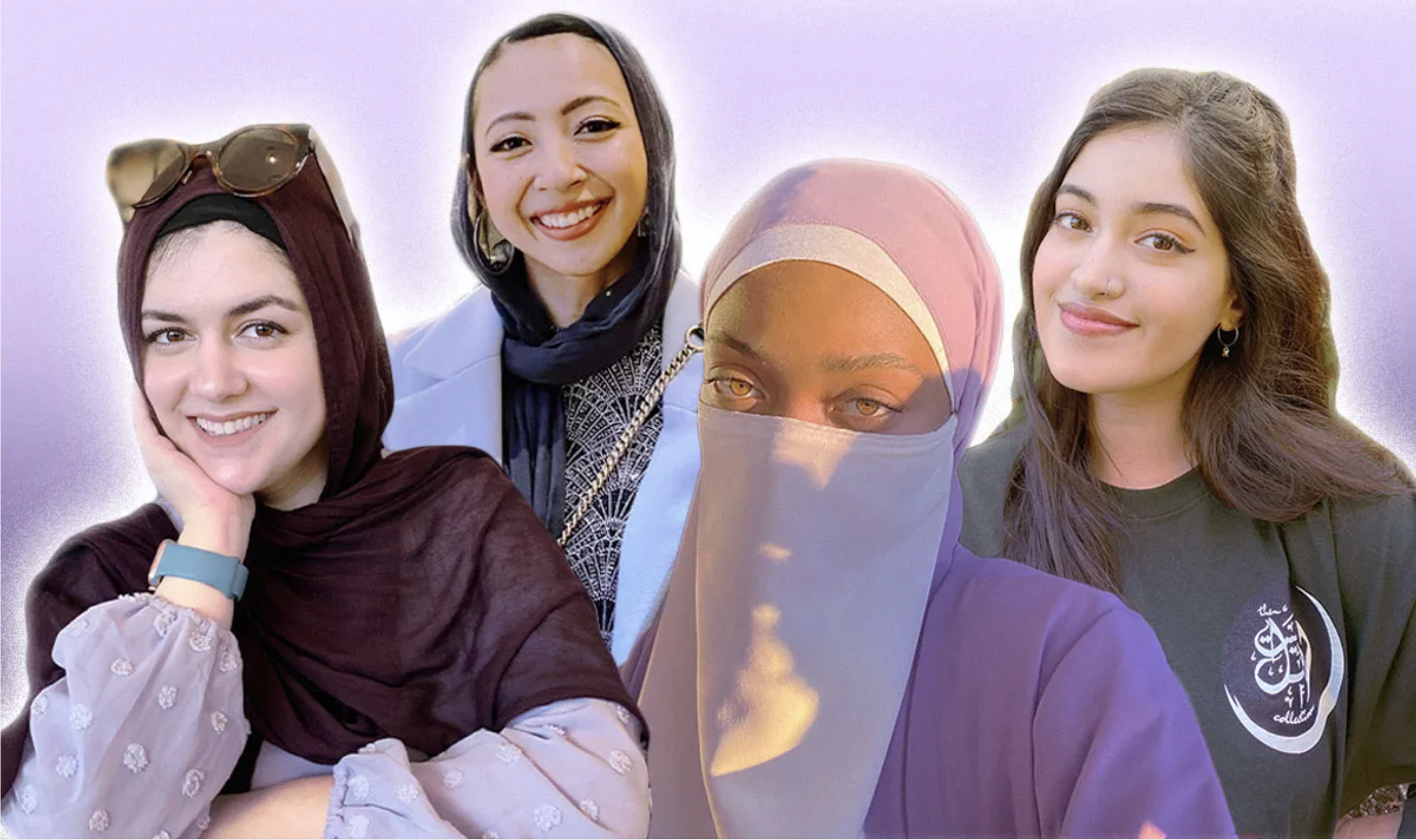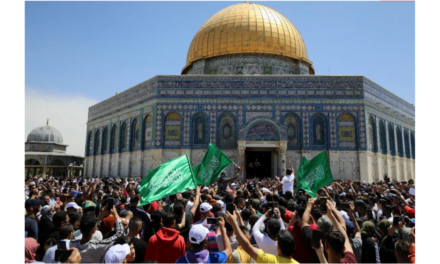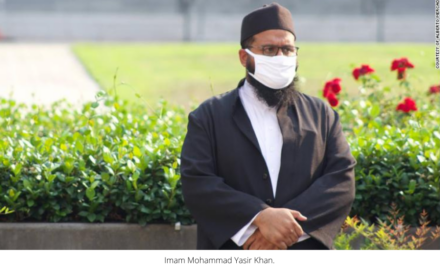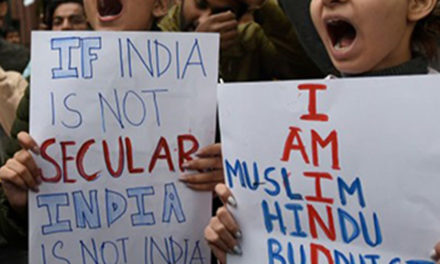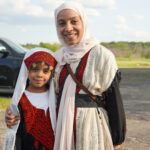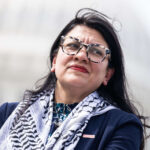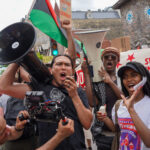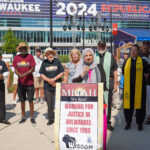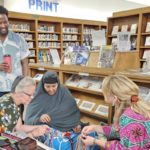““Such a private act of personal worship has so much stigma and negative reactions within the global community.”
Twenty-one-year-old Alia Saleeban started wearing the headscarf when she was 14. A senior at Howard University, she hadn’t been forced to make the decision; instead, she donned the head covering when she felt comfortable being visibly Muslim.
Yet, her choice has always been a source of contention. “A lot of times I had to let people understand that I chose to wear the hijab, no one forced upon me wearing the hijab and I’m not oppressed,” she says. “It was like, ‘Why are you guys telling me how I should feel? You’re not giving me a choice to feel the way I feel.’”
Saleeban is not alone in this struggle.
Since the late 19th century, this personal yet public symbol of a Muslim woman’s faith has been used as a political tool to control women’s bodily autonomy. The first known instance of a hijab ban dates back to when the British colonized Egypt. The consul general, Lord Cromer, called the hijab a “fatal obstacle” to Egyptian women participating in Western civilization. Back home in Britain, though, he presided over the National League for Opposing Women’s Suffrage.
In Turkey, after the Ottoman Empire disbanded in 1924, the nation’s new secular ruler, Mustafa Kemal Atatürk, discouraged wearing the headscarf, as The New Yorker recounted. A dozen years later, Reza Shah Pahlavi in Iran, who was backed by the West, instituted a hijab ban known as kashf e hejab. Fast forward a few decades, women began wearing the hijab to protest the Shah’s corrupt rule, or they were forced to wear it by male family members. When the Islamic Republic came into power in 1979, the leaders instated compulsory hijab, an arbitrary law that leaves what constitutes good or bad hijab to the morality police to decide.
Today in Iran, protesters are taking to the streets, where for over a month they’ve been demanding the end of the Islamic Republic’s rule and its laws, including mandatory veiling. The youth-led protests were ignited after 22-year-old Mahsa Amini, known by her Kurdish name Jina, was arrested for allegedly “improperly” wearing her hijab and wearing “tight” pants. She died in police custody in Tehran three days later. Iranian women have responded by burning their hijabs during protests and cutting their hair in public, rallying under the slogan “zan, zendegi, azadi,” or “women, life, freedom.”
The government has cracked down in response, and advocacy group Iran Human Rights estimates that, as of October 8, at least 185 people, including 19 children, had died during the protests. The protesters are also demanding labor rights, bodily autonomy, and an end to the persecution of minority groups.
Meanwhile in India, the Supreme Court was divided on a ruling banning the head covering in Karnataka, and referred the decision to the chief justice, essentially leaving the ban in place. In 2010, France banned the full-face veil, or niqab, that some Muslim women wear. Hijab has been outlawed in French public schools for nearly two decades, along with Christian crosses and Jewish yarmulkes, under the guise of religious neutrality.
Closer to home, the Obama-era Countering Violent Extremism program, which was rebranded under Trump as the Office of Terrorism Prevention Partnerships, has been criticized for targeting Muslim Americans. That program was preceded by the United Kingdom’s PREVENT policy, which was criticized in an open letter from academics and public personalities in the UK because “it reinforces an ‘us’ and ‘them’ view of the world, divides communities, and sows mistrust of Muslims.” Under the program, they wrote, “growing a beard, wearing a hijab, or mixing with those who believe Islam has a comprehensive political philosophy are key markers used to identify ‘potential’ terrorism.”
“It’s really frustrating that such a private act of personal worship has so much stigma and negative reactions within the global community,” says Husna Hadi, a 28-year-old Indonesian American software engineer living in New York City.
Hadi, like Saleeban, wears the hijab on her own accord. Growing up, it was easy wearing this “core part” of her Muslim identity around her friends and family, all of the same faith, she says. But in spaces that are not predominantly Muslim, it remains challenging.
“Putting on extra layers of clothing in, like, formal events or at the beach, for me, that’s when I feel the most sometimes resentment for the scarf,” Hadi explains, pausing to choose her words carefully. “Where I think, Oh, why can’t I just be like the others?”
She persists despite those frustrations, reminding herself that wearing hijab is an act of worship she has committed to God. As a fellow hijabi, Siddiqah Amatullah Mumin, a 19-year-old student at Santa Monica Community College in California, understands these internal dilemmas. For the last year or two, the aspiring nurse has worn the niqab — the face covering.
Like any teenager, she has spent much time on social media, comparing herself to other girls. “I noticed that I was becoming a little vain,” she says, “so I was like, ‘Okay, if I cover my face, it gives me more room to work on other traits that I see in myself that I don’t like as much.’”
But when she worked in Century City, an upper-class white neighborhood, she says she was afraid of how people would respond, so she would switch her niqab for a face mask when she clocked in. “A lot of places aren’t safe, comfortable environments for Muslims to wear the hijab confidently,” she says. Data reflects this: In America, Muslim women are more likely to experience Islamophobia, likely because they wear the hijab.
Noor Zanial was in junior high when she decided to wear the hijab. The hostility that followed created trauma for her, which took a long time to work through for the now 27-year-old public health researcher at the University of Washington. “I was bullied, I was physically harassed. I don’t know why I’m, like, tearing up,” she says. “I was begging my parents, ‘Please homeschool me.’” Her parents didn’t homeschool her, and Zanial says she developed a “tougher personality” to help cope with the bullying, making high school a better experience.
Then, when Zanial was in college, Deah Barakat, 23, his wife Yusor Abu-Salha, 21, and her sister, Razan Abu-Salha, were murdered in their Chapel Hill, North Carolina, home. Both women wore the hijab. “I just remember me and so many of my friends in college, it felt like we lost family members,” she says. “And we know it’s largely attributed to the fact that they were visibly Muslim.”
Instead of deterring her from wearing the hijab, violence like the Chapel Hill shooting reinforced to Zanial what it means to be visibly Muslim, visibly othered. “If I didn’t wear the hijab, I would very easily pass as white,” she says matter-of-factly.
Saleeban, Hadi, Mumin, and Zanial agree that wearing the hijab is a two-part struggle: There’s internal pressure to fit in by not wearing it, and then there’s dealing with external harassment. Adding to these woes are world leaders proposing laws that police the hijab.
“I believe that any laws controlling a woman’s right to choose, regardless of what it is, are draconian,” Zanial says, comparing the hijab laws to overturning Roe v Wade. “It’s rooted in patriarchy, whether it’s the right to wear or not wear hijab, whether it’s like choosing to have an abortion or not having an abortion.”
In addition to being patriarchal, attitudes toward the hijab, Saleeban and Mumin say, are created through the gaze of Western notions of feminism. “Things that are being pushed today in regards to feminism is, you take off your clothes, you’re more empowered,” Mumin says.
Saleeban uses the example of the Iran protests to demonstrate the point. International media organizations, she says, have covered the uprisings in depth, with many women in America standing in solidarity with them. Yet smaller protests in India by women pushing for the right to wear the hijab have received little attention.
“Unfortunately, we don’t have people like us making these laws,” says Zahra Abbas, a 22-year-old recent college graduate who runs a community organization, Ahlul-Bayt Collective. She does not wear the hijab, saying her relationship with religion is “imperfect.” The right to wear the hijab is a personal choice, which Abbas says has been co-opted by the societal “need to control women’s bodies and the perceptions of what people think women’s bodies should be.”
Abbas is also a Shia Muslim, a sect that accounts for 10-13% of the global Muslim population, and decries the laws that force women to wear the hijab or ban hijab as painting all Muslim women with one brush as a monolith. “As a Shia Muslim, I feel like we are constantly left out of these [intra-Muslim] conversations and the people are very, very dismissive of our thoughts and opinions,” she explains. “Especially in Iran, which is a majority Shia-run country, with what’s happening politically, people have more incentive to be anti-Shia.”
Abbas says it’s crucial to acknowledge intersectional identities in the discourse surrounding Muslim women. These sentiments resonate with Saleeban, who chose to attend an HBCU to be accepted for being Black and Muslim. She says, “I don’t have to explain why I wear the hijab because no one’s asking me why I wear the hijab.”
If there is one misconception about the hijab that she could change, Saleeban would have people accept that it should be a personal choice, and those that choose to wear it, like her, are not oppressed. She says simply, “We’re more than what the eye meets.”
